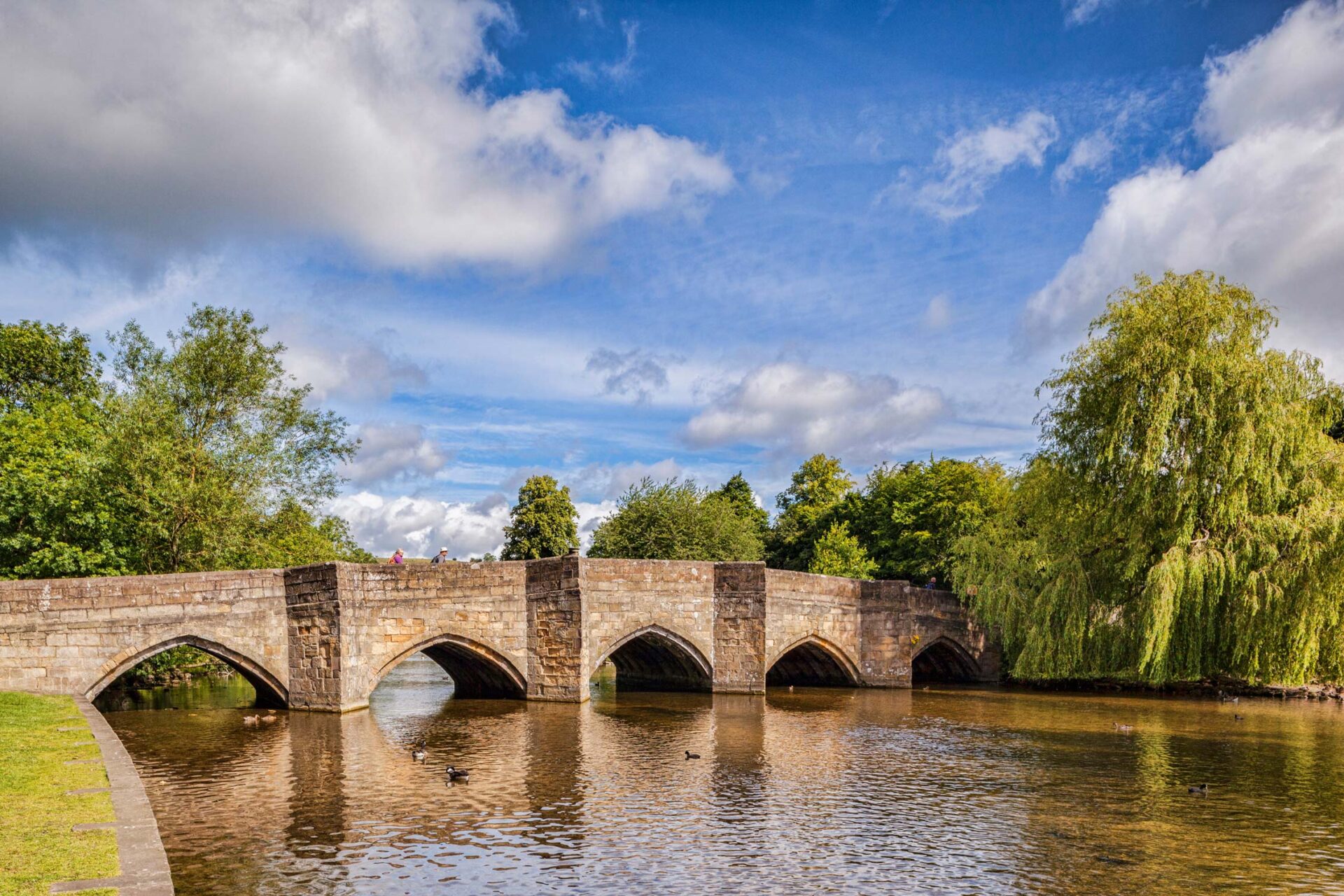
History of Bakewell
A delightful historic town that is perfect for visiting whilst on a break in the peak district - find out about the history.
200 years ago, Bakewell, originally called Baedeca’s wella, was made up of narrow streets and timber framed buildings with thatched roofs. Baedeca’s wella was first mentioned in the Anglo-Saxon Chronicle in 924, and it is thought that there must have been a Saxon who settled by the warm springs which rose at Bakewell.
Bakewell Historical Sites
In the same year of 924, Edward the Elder ordered a fort to be built in Bakewell overlooking the River Wye. It then became a town well known throughout England because of his presence. Not long after, a Motte and Bailey Castle was built to guard the river crossing, the skeletal remains you can still see today.
Close by stands All Saints Church, a grade one listed building founded in 920, and was even mentioned in the Domesday Book. Built on a hillside site overlooking the growing town of Bakewell, it is now one of the finest medieval parish churches in England, bursting with history.
Old House Museum is hidden away behind All Saints Church and is the oldest house in Bakewell. Originally a Parsonage, dating from 1534, it’s one of the best-preserved 15th-century houses in the country. Now, a museum housing curious objects through time, even an elephant’s foot!
Bakewell Market
Dating back to the 13th century, Bakewell’s flourishing weekly market attracted visitors far and wide.
Due to the increased traffic over the River Wye from people visiting the town and market, in the 1200’s a stone bridge was built. The five-arched bridge is now one of the best-known landmarks in the Peak District and is one of the oldest in the country and has been classed as a designated ancient monument.
The modern layout of the town only came about in the 19th century when Rutland Square was created, including the Rutland Arms. It is claimed that Jane Austen stayed here in 1811 when she based Lambton, in Pride and Prejudice, on Bakewell, and Pemberley on Chatsworth House.
Bakewell Tart History
Bakewell, well known for its Bakewell tart, was a confection made by mistake. In around 1860, a cook at the Rutland Arms was baking a jam tart but misunderstood the recipe and created what is now known as the Bakewell Pudding. Now, almost every visitor to the town samples this culinary delight.
There are many Bakewell Pudding shops in town yet the original bakery remains a mystery.
If you’re looking for somewhere to stay whilst visiting Bakewell we have a number of hotels, inns and holiday cottages in the Derbyshire area that are perfect for a countryside break.